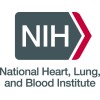
Etidronate for Arterial Calcifications Due to Deficiency in CD73 (ACDC)
Arterial CalcificationCD73 DeficiencyBackground: Arterial Calcifications due to Deficiency in CD73 (ACDC) is a rare genetic disease. People with ACDC develop calcification in the arteries of the lower extremities as well as calcium deposit in the joints of the fingers, wrists, ankles and feet. The lower extremities calcification causes claudication because of severe ischemia requiring at time revascularization procedures. the calcium deposits in the joints causes severe debilitating pain in the hands and feet. Currently, there are no standard treatments for ACDC. Etidronate is a bisphosphonate that interferes with bone metabolism. It is approved to treat Paget's disease, a condition in which the bones are soft and weak and may be deformed, painful, or easily broken. It is also used to treat high blood calcium levels. Researchers want to see if it can be used to treat the calcifications of ACDC and improve pain and blood flow in the lower extremities and arthritic pain of the hands and feet. Objectives: - To see if etidronate is a safe and effective treatment for ACDC. Eligibility: - People between 18 and 80 years of age who have been diagnosed with ACDC. Design: Participants will be screened with a physical exam and medical history. They will also have imaging studies, including CT scan of the lower extremities, x-rays and DEXA bone scans, before starting treatment. Blood and urine samples will be collected. An exercise tolerance test will also be given and ABI (ankle brachial index will be measured. Participants will take etidronate by mouth once a day for 14 days every 3 months. They will be assigned an individualized 6- month drug schedule to follow. Participants will have regular study visits throughout the treatment period. These visits will involve imaging studies, full dental exams, and blood and urine tests. Participants will also have exercise tolerance tests and ABIs measured. Participants may also provide tissue samples for further study. Treatment will continue for up to 3 years as long as the side effects are not severe and the condition does not become worse. Participants will have a final follow-up visit after stopping treatment.

BIOLUX P-I First in Man Study
AtherosclerosisArteriosclerosis2 moreA prospective, multi-centre, randomized controlled, First in Man study to assess the safety and performance of the coated Passeo-18 Lux Paclitaxel releasing PTA Balloon Catheter vs. an uncoated balloon catheter in patients with stenosis and occlusion of the femoropopliteal arteries.

A Randomized Clinical Trial of Adipose-derived Stem Cells in Treatment of Non Revascularizable Ischemic...
Ischemic Heart DiseaseCoronary Arteriosclerosis3 moreThe purpose of this study is to establish safety and feasibility of utilizing Adipose Derived Stem & Regenerative Cells (ADRCs) in patients who have areas of myocardium that are not revascularizable and have demonstrated reversible ischemia.

Plug Arterial Closure System (PACS, 7F)
AngioplastyTransluminal2 moreThe purpose of this study is to assess the safety and feasibility of the 7F Ensure Medical Vascular Closure Devices to facilitate hemostasis in patients undergoing diagnostic or interventional coronary procedures using a standard 7F introducer sheath.

Combination Stem Cell (MESENDO) Therapy for Utilization and Rescue of Infarcted Myocardium
Coronary Artery DiseaseCoronary Arteriosclerosis2 moreThe purpose of this research study is to determine if the transplant of a combination of stem cells, obtained from the bone marrow of the same patient, is effective for utilization and rescue of infarcted myocardium. End points will be the assessment of development of mature and stable new blood vessels as well as improvement in cardiac function. This, Phase I, single center, prospective, non-randomized, open-label study will evaluate the safety and feasibility of use of the proposed combination of autologous stem cells. Potential subjects who fulfill clinical and laboratory entry criteria at screening will undergo a process of bone marrow aspiration for preparation of the two types of bone marrow-derived stem /progenitor cells to use. The two bone marrow-derived cell types will be mixed and implanted to patients approximately 2 weeks after bone marrow aspiration. After transplant, patients will be have a 3 month follow-up to evaluate safety as well as functional heart improvement by analysis of symptoms, myocardial perfusion SPECT, and echocardiography. Study population will include adult male and female subjects, ages 18-70, presenting with acute myocardial infarction and subjects who have had a recent (within 12 months) myocardial infarction and will undergo coronary artery bypass grafting. Patients will be divided in two groups: the first group will enroll patients with acute myocardial infarction whom percutaneous coronary intervention restored myocardial flow after 4 hours or greater of the initiation of symptoms, the second group will enroll patients who are candidates for coronary artery bypass surgery and had a myocardial infarction in the past 12 months. Patients will receive the cell mixture by intracoronary or intramyocardial infusion, respectively. The rationale of this clinical study is based on the observation that most attempts using adult stem cells for myocardial regeneration have utilized a source of bone marrow derived progenitor cells with the potential to generate new blood vessel and thus contribute to the revascularization of the ischemic tissue. This therapy seems to be adequate but not sufficient, since it lacks a source of stem cells capable of differentiating and maturing into cardiac muscle cells, thus contributing to the recovery of local contractility. The proposed combination stem/progenitor cell therapy to be used in this protocol is aimed at contributing cell types capable of regenerating both blood vessels and muscle tissues damaged after MI.

Adding Ezetimibe Tablet to Ongoing Treatment With Atorvastatin in Subjects With High Cholesterol...
HypercholesterolemiaCoronary ArteriosclerosisThis study is being conducted to compare the efficacy, safety, and tolerability of ezetimibe 10 mg coadministered with atorvastatin 10 mg versus atorvastatin 10 mg in Indonesian population with primary hypercholesterolemia.

Modified-release Dipyridamole/Aspirin (200mg/25mg bd) Versus Aspirin (75mg) in Aspirin-resistant...
Coronary ArteriosclerosisThe primary objective of this study is to assess whether adding modified-release dipyridamole to aspirin (Asasantin Retard) has measurable effects on markers of platelet function (for example, platelet aggregation) in patients with cardiovascular disease who are known to be resistant to aspirin alone

A Study To Evaluate the Effect of Rosuvastatin On Intravascular Ultrasound-Derived Coronary Atheroma...
Coronary ArteriosclerosisThe purpose of this study is to see if 40 mg of rosuvastatin taken daily will reduce the atherosclerosis (fatty deposits) in your arteries

Familial Atherosclerosis Treatment Study
Cardiovascular DiseasesCoronary Arteriosclerosis3 moreTo compare the effects of two intensive lipid-lowering regimens with conventional therapy on coronary atherosclerosis as assessed by arteriography.

Scoreflex NC - Scoring PTCA Catheter
Coronary Artery DiseaseCoronary Disease4 moreA prospective, open label, multi-center, single arm, observational study designed to evaluate the acute safety and device procedural success of the Scoreflex NC Scoring Percutaneous Transluminal Coronary Angioplasty (PTCA) catheters in subjects with stenotic coronary arteries during percutaneous coronary intervention. Two-hundred (200) subjects will be treated at up to 15 U.S. sites with the Scoreflex NC Scoring PTCA catheter during their index procedure. All subjects will be screened according to the protocol inclusion and exclusion criteria and will be followed through hospital discharge.
